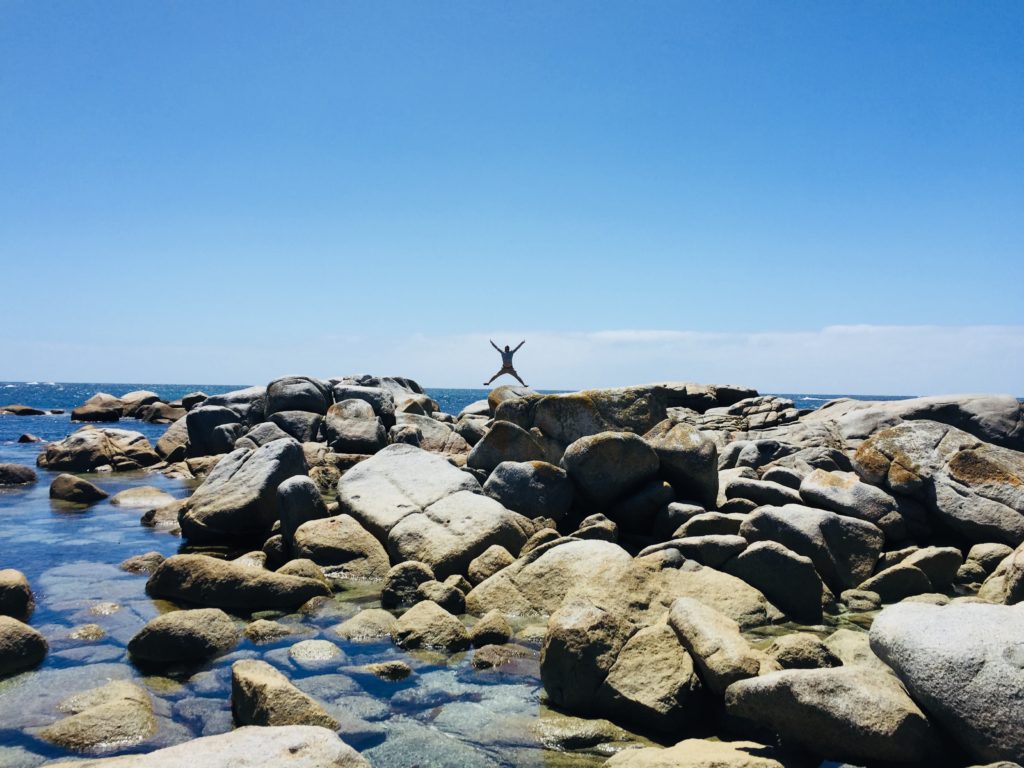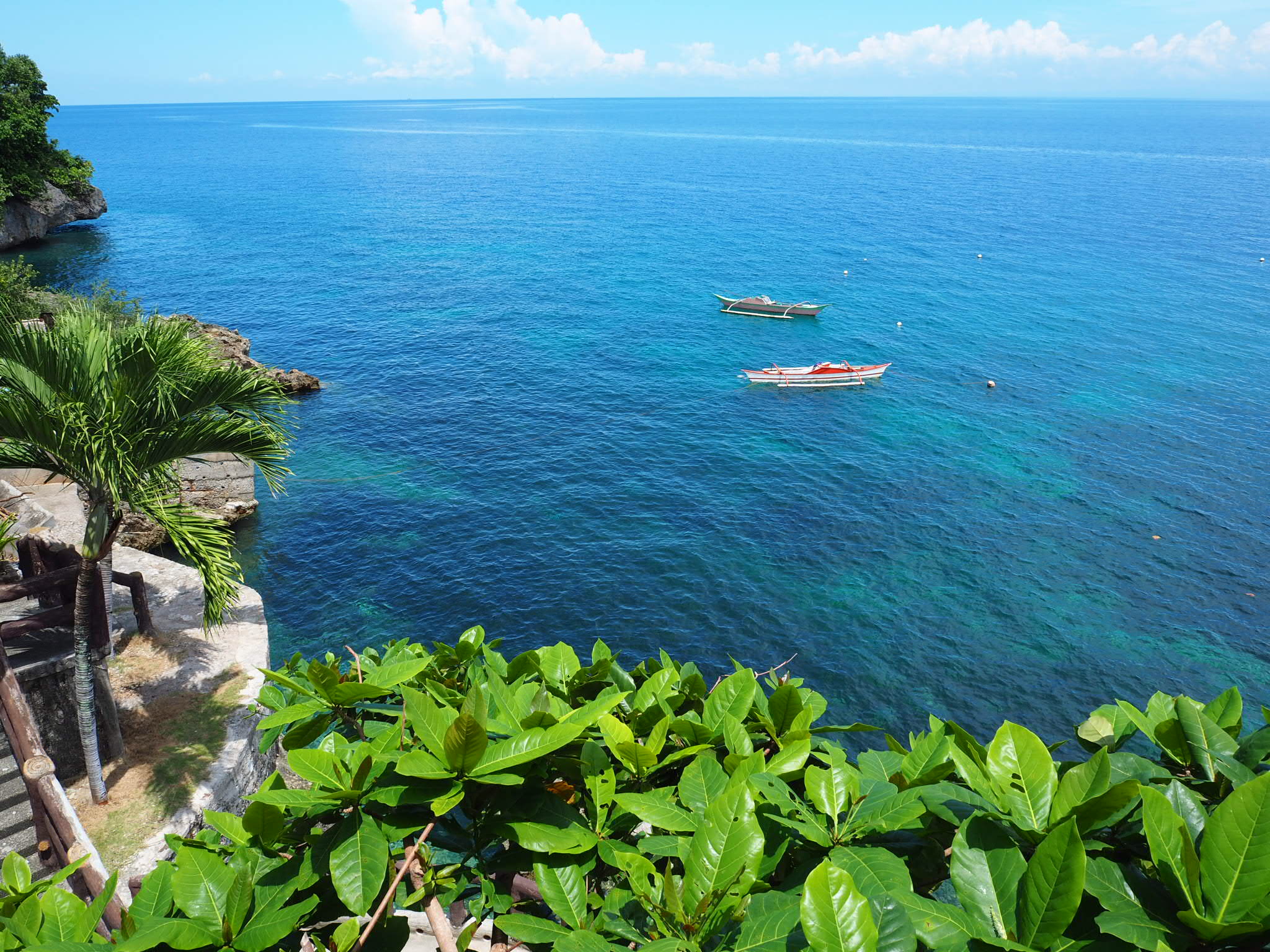Welcome to Tasmania’s East Coast
Mainland Australia’s east coast has been getting the plaudits for years now. With beautiful beaches and stunning scenery it has been on the list of many travellers. Myself included, back in 2008. However there is another east coast in Australia with a fraction of the visitors and some of the most beautiful scenery on the continent. Welcome to Tasmania’s East Coast.
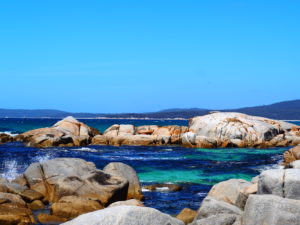
Where
Starting from the dramatic cliffs of the Tasman Peninsula and snaking all the way to Mount William National Park, Tasmania’s east coast is one of the highlights of any trip to Australia’s ‘other island.’
This is not a definitive list of everything available on the east coast. We spent 6 days on Tasmania’s east coast and loved every second of it. Sadly we only had 2 weeks in Tasmania itself, if we had longer we would’ve gladly spent more time on this part of the island.
How
Whilst public transport is available in Tasmania, having your own set of wheels is a far more enjoyable way to experience the island. We chose a car over a camper van due to the price, as renting a camper van in Tasmania can be very expensive. We were there for only 2 weeks and the extra accommodation costs that come with renting a car, i.e. staying in guesthouses, airbnbs and hostels would still have been cheaper than just the basic van rental fee.
If you plan on camping then this is even more of a reason to go for a car over a camper. However if you are visiting for longer there is a good chance a camper van may be a cheaper option.
We compared a number of rental agencies and for us Europcar offered the most competitive price. They were the cheapest day hire price and in addition had the cheapest insurance options. They also have a 24hr drop off which is extremely handy as we flew out from Hobart airport at 5am.
Costs:
Tasmania, like the rest of Australia can be quite expensive. We have included a few money saving tips below to help lessen the pain to you bank balance. All costs are in Australian dollars.
Tasmania’s East Coast Highlights
Port Arthur
Located on the Tasman Peninsula, Port Arthur is one of Tasmania’s and indeed Australia’s most important historical sites. This was one of the first, and one of the largest convict settlements in Australia. The buildings are generally in good condition and there is a huge amount of information available regarding the history of the site.
The cost of the ticket includes a short guided tour and boat cruise, however for us the real highlight was the ghost tour that is offered every evening which need to be booked separately. This can be done when you arrive at the site itself or you can book a couple of days in advance over the phone. We would definitely recommend the latter as spots fill up very quickly. The tours include a number of the strangest and scariest experiences to have occurred throughout Port Arthurs gruesome history.
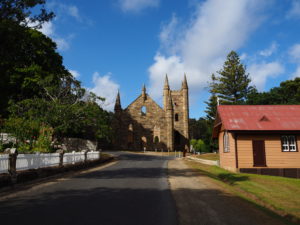
Tasman Peninsula
The Tasman peninsula itself is worth a day of exploration. As a word of warning the weather on the peninsula, like the rest of Tasmania, can change very quickly. The coal mines on the northwestern side of the peninsula provide another insight the life faced by convicts sent to Australia in the 1800s.
For some particularly beautiful coastal scenery head down towards Doo-Town, where all of the houses names begin with Doo. Next to the blowhole is s rather fantastic little van selling all kinds of locally caught seafood. Just further on from here is the Tasman Arch and the Devils Kitchen. There are a number of coastal walks in the area, sadly when we went we were blighted by rain.
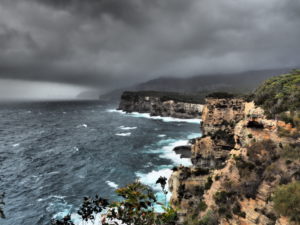
Head back across the eagles neck, a 30 metre or so wide piece of land that connects the Tasman peninsula to the rest of Tasmania. There is a little museum giving information about the dog line that blocked passage of any escapees from Port Arthur. Slightly further on is the tessellated pavements that provide some great views back along the coast.
The peninsula is also home to some beautiful beaches and excellent walks. Guesthouses in the area will be able to provide extra information if you need.
Maria Island National Park
Beautiful Maria Island is one of Tasmania’s little gems. Accessed from the small town of Triabunna it makes an excellent day trip, although there plenty of campsites and cabins to camp if you have more time than we did.
You can buy all the necessary tickets at the tourist information centre next to the harbour. We also purchased our national parks pass here for $58 which then gave us each a $10 discount on our ferry tickets for Maria Island.
Bike or Hike?
The island is an excellent place for cycling and walking. Bike rentals can be arranged at the tourist information centre in Triabunna. Since we only had a day a bike made sense for us, as we would be able to cover more ground. The paths are in excellent condition and a very bike friendly.
Bike trails go south from Darlington (the ferry dock) down to the southern regions of the island. The coast line around the painted cliffs is simply sublime and is definitely worth exploring. On a number of occasions we parked up our bikes and went off to explore the coastline. There are a few particularly beautiful points just south of the painted cliffs.
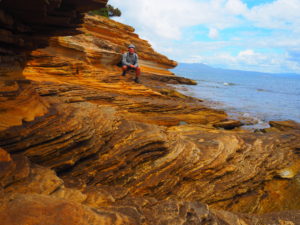
No visit to Maria Island is complete without encountering some of the local wildlife, these include cape barren geese, who can seem rather unfriendly at first, wallabies, pandelemons and wombats. As with all wildlife in Australia they should not be touched or fed. The Tasmanian government has tried to re-introduce a small group of tasmanian devils to the island in the hope of breeding a population in an area free from devil facial tumour that has caused their rapid decline over the last few years.
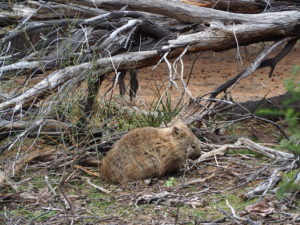
The northwestern coastline is a protected marine reserve and there is some semi decent snorkeling to be had, although do not be expecting anything like the tropical waters of Fiji or Philippines here. There are plenty of big fish and rock lobsters to be seen. There are also a number of very large stingrays that can be hard to spot due to the lack of visibility in the water. As I was swimming back to shore I got the fright of my life when I saw one very close to me, since then can become aggressive if startled or threatened. Fortunately we were equally spooked and headed in opposite directions. The water here, like in all of Tasmania can be very cold. A wet suit is not necessary but it is certainly more comfortable with one.
For more info on hikes and staying on the island you can speak to the tourist information centre in Tiabunna or on Maria Island in Darlington.
Freycinet National Park
For many this is the highlight of Tasmania’s east coast and on arrival it is easy to understand why. This National Park is absolutely stunning. If you have a parks pass you can use it here. If you don’t you need to pay $24 per vehicle, per 24 hours. Considering a parks pass costs $60 you will have made your money back if you spend 3 days in Tasmania’s national parks, which is very easy!
Where to stay
Due to the National Parks popularity accommodation here can be quite expensive, so it may be better to stay a little further away from the park. Inside the park itself the only real area to stay is Coles Bay which can be very expensive and also there are very limited amenities. The other two options are Swansea, to the west and Bicheno to the North East. Both areas have more affordable accommodation and are only 30 minutes or so drive from the park. We ended up staying in Bicheno as we were heading north along the coastline so it made more sense for us. It’s a quaint little town with a couple of restaurants and pubs. There are also penguin tours in the evening and a rather spectacular blow hole.
What to see and do
Like all of Australia’s National Parks there are a lot of hiking options in Freycinet. The information centre can provide all the necessary maps and advice when you enter the park. The two most popular walks are wineglass bay and the hazards track, which ends at wineglass bay but takes a route around the coast as opposed to over the hills. We did the former of the two walks and unsurprisingly it is busy. However there is a very simple way to lose the majority of the tourists. When you get to the wineglass bay viewpoint, instead of returning to the car park carry on down to wineglass bay itself. The beach itself is spectacular, the perfect place to rest your weary legs.
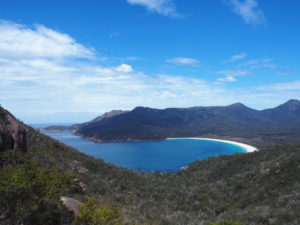
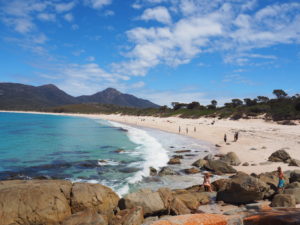
There are a number of other beaches and bays that are well worth checking out. A lot of people come to Freycinet for wineglass bay and miss out on some other stunning places. Beside Wineglass Bay our favourites were sleepy bay, friendly beaches and honeymoon bay. Both are generally very quiet with honeymoon bay having some decent snorkeling. The Friendly beaches are particularly stunning and the likelihood is that you will be sharing it with only a handful of other people.
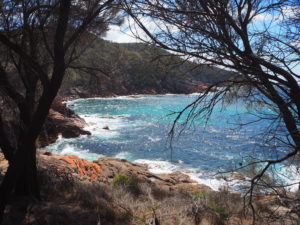
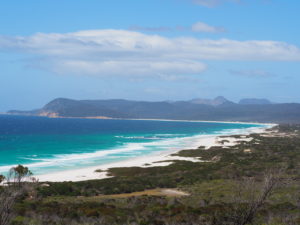
We spent a day and a half at Freycniet but we could have very easily spent longer here.
Chain of Lagoons
Slap bang in between Freycinet and the Bay of Fires is the chain of lagoons. A wonderful stretch of often deserted coastline between two of Tasmania’s heavy-weights this is a worthy stop on the way to or from the Bay of Fires. Be warned that the winds here can be quite strong and the water can be mind numbingly cold.
The A3
It seems a little odd to mention a road as one of highlights of Tasmania’s stunning east coast. However the A3 from Freycinet up to the Bay of Fires is simply outstanding. Littered with incredible coastal scenery and deserted beaches this could easily rival the great ocean road as Australia’s greatest coastal drive.
The areas just north and south of Scamander are particularly stunning
Binalong Bay
The southern most beach in the Bay of Fires deserves its own special mention. Crystal white sands and dazzling blue water make this a wonderful place to wile away hours or even days. The beach has two sections, the busy section and the quiet section. To get to this quiet section head down the C848 and take a right hand turn. You will come to a residential road with a couple of houses on it. Head to the end of the road and there is a small area for parking and a track that leads strait down to the beach. There are far fewer tourists at this, the northern end of the beach. The southern end of the beach is much closer to St Helens, hence the larger crowds.
Like Freycinet, staying close to Binalong Bay and the Bay of Fires can be very expensive. The closest town is a town called St Helens, which we weren’t huge fans of. We ended up staying about 30 minutes south of Binalong Bay in Scamander. A town just north of the chain of lagoons. Accommodation is cheaper and the area is far quieter than in St Helens. Also the beaches just north of Scamander are particularly stunning
Bay of Fires
The final destination for many along Tasmania’s east coast is the Bay of Fires. It gets in name from Captain Tobias Furneaux after seeing the fires of aboriginal people on the beaches. Made up of orange tinged rocks, due to lichen, not fire, this is a wonderful area to just park up and explore. To your north is the Mount William National Park and to the south, Binalong Bay.
Keep driving as far as you can into the park from the C848. Eventually you will reach a small car park which has a lovely, short coastal walk. Heading back from this car park there are numerous places to park the car and go and explore. Further on from here there are some stunning beaches around an area called the Gardens. Relaxing on the these beautiful beaches is the perfect way to end a trip along Tasmania’s stunning east coast.
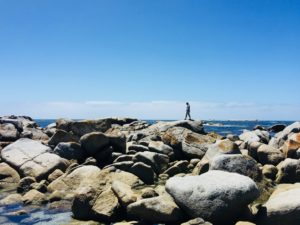
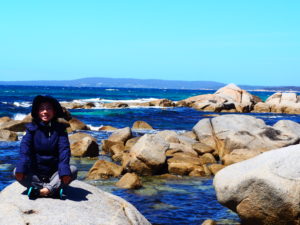
Love Tasmania’s East Coast and want to know more about Tasmania?
Check out our article on two weeks in Tasmania I wrote for Nomadasaurus and we have another article with everything you need for a trip to Cradle Mountain!
